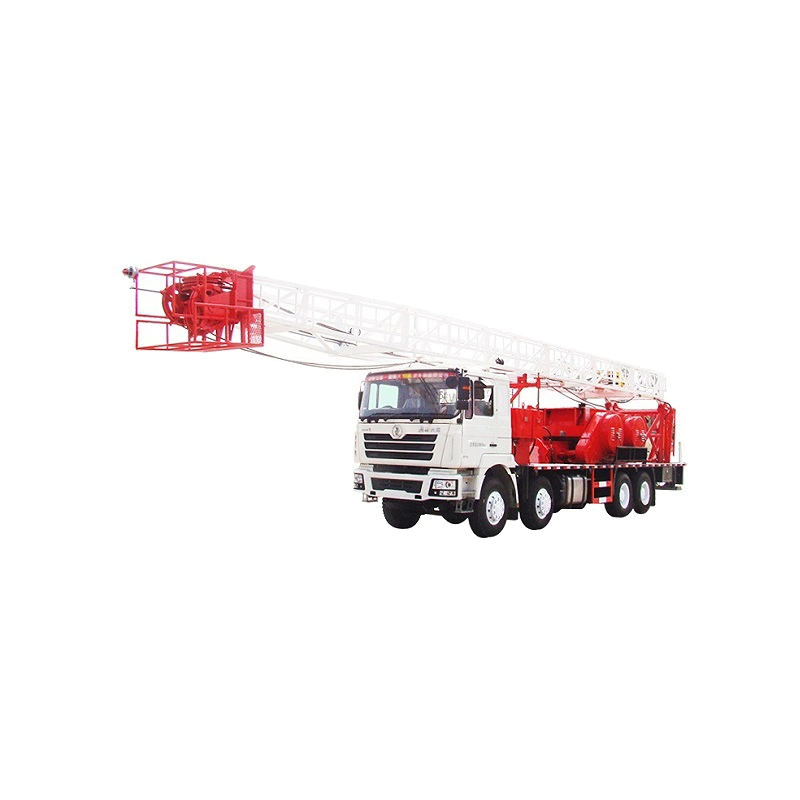Differences Between Workover Rigs and Drilling Rigs
In the oil and gas industry, understanding the distinctions between workover rigs and drilling rigs is crucial for efficient operations and cost management. Both play pivotal roles in the lifecycle of a well, but they serve distinct purposes and are equipped differently. Here, we explore the fundamental differences, uses, and specific features of workover rigs and drilling rigs.

In the complex world of oil extraction, rigs are the backbone of operations. The two primary types—workover rigs and drilling rigs—are designed for specific stages of well development and maintenance. Let’s delve deeper into their functionalities and differences.
What are Drilling Rigs?
Drilling rigs are used in the initial phase of well construction. These robust and often massive structures are designed to drill new wells from the surface to the reservoir depths. Their primary function is to penetrate the earth's surface and reach oil or gas deposits.
Key Features of Drilling Rigs:
Size and Structure: Drilling rigs are generally larger and more complex than workover rigs. They can be land-based or offshore, including types such as jack-up rigs, semi-submersible rigs, and drillships.
Drilling Depth: They are equipped to drill thousands of feet below the surface, often through various rock layers.
Components: Key components include the derrick or mast, drill string, rotary table, and mud pumps. Advanced rigs may also feature top drives, blowout preventers, and sophisticated monitoring systems.
Mobility: Some drilling rigs, particularly land-based ones, are designed to be mobile to move between drilling sites.
Types of Drilling Rigs:
Land Rigs: Used for onshore drilling. They vary from small truck-mounted units to large structures.
Offshore Rigs: Include platforms like jack-up rigs, which are used in shallow waters, and semi-submersible rigs, suitable for deeper waters.
Functions of Drilling Rigs:
Well Drilling: Creating the initial wellbore.
Coring and Sampling: Extracting rock samples for analysis.
Directional Drilling: Steering the drill bit to hit specific targets.
Blowout Prevention: Using blowout preventers (BOP) to control well pressure and prevent uncontrolled releases.
What are Workover Rigs?
Workover rigs are utilized for the maintenance and repair of existing wells. They are less complex than drilling rigs but are essential for ensuring the continued productivity and safety of wells.
Key Features of Workover Rigs:
Size and Structure: Typically smaller and more mobile than drilling rigs. They are designed for quick setup and operations.
Equipment: Include smaller derricks or masts, wireline units, coiled tubing units, and pumps. They do not require the heavy drilling equipment found on drilling rigs.
Versatility: Capable of performing a wide range of maintenance tasks.
Types of Workover Rigs:
Truck-Mounted Rigs: Highly mobile and suitable for quick, onshore interventions.
Skid-Mounted Rigs: More stable, often used in offshore or more permanent onshore setups.
Functions of Workover Rigs:
Well Servicing: Routine maintenance such as replacing worn-out equipment and cleaning the well.
Well Enhancement: Operations like hydraulic fracturing or acidizing to increase production.
Plug and Abandon: Safely sealing non-productive wells.
Completion Operations: Installing production tubing and equipment after drilling is completed.
Fishing Operations: Removing obstructions from the wellbore.
Operational Differences
The primary operational difference between workover rigs and drilling rigs lies in their purpose and the stage of well development at which they are used.
Initial Drilling vs. Maintenance:
Drilling Rigs: Focus on creating the wellbore. They handle the heavy-duty task of drilling through rock and are equipped to manage the high pressures and technical challenges of new well creation.
Workover Rigs: Engage in post-drilling activities. They ensure the well continues to produce effectively and safely over its lifecycle.
Equipment and Techniques:
Drilling Equipment: Involves complex machinery like rotary tables, drill pipes, and blowout preventers, designed for creating new wells.
Workover Equipment: Utilizes lighter, more specialized tools for maintenance tasks such as coiled tubing, wireline tools, and snubbing units.
Mobility and Setup:
Drilling Rigs: Often semi-permanent or difficult to move. Offshore rigs, in particular, require significant time and resources to relocate.
Workover Rigs: Designed for quick mobilization and setup, allowing for rapid response to maintenance needs.
Economic Considerations
The costs associated with operating these rigs also highlight their differences. Drilling rigs represent a significant investment due to their complexity and the duration of drilling operations. Workover rigs, while still costly, are generally less expensive to operate and maintain, focusing on shorter-term projects.
Cost Implications:
Drilling Operations: High capital and operational expenditure, justified by the necessity of creating new wells.
Workover Operations: More cost-effective, focusing on maintaining and enhancing existing wells.
Technological Advancements
Both workover and drilling rigs have benefited from technological advancements, improving efficiency and safety.
Automation and Remote Monitoring:
Drilling Rigs: Increasingly automated, with remote monitoring systems enhancing precision and safety.
Workover Rigs: Also integrating automation to streamline maintenance operations and reduce downtime.
Enhanced Recovery Techniques:
Drilling Rigs: Incorporate directional drilling and fracking technologies to access hard-to-reach reserves.
Workover Rigs: Utilize advanced well stimulation techniques to enhance oil recovery.
Conclusion
Understanding the differences between workover rigs and drilling rigs is fundamental for optimizing operations in the oil and gas industry. Each type of rig plays a critical role at different stages of well lifecycle management, from initial drilling to ongoing maintenance and enhancement. Recognizing their distinct features, operational capacities, and economic impacts can significantly contribute to more efficient and cost-effective resource extraction.



